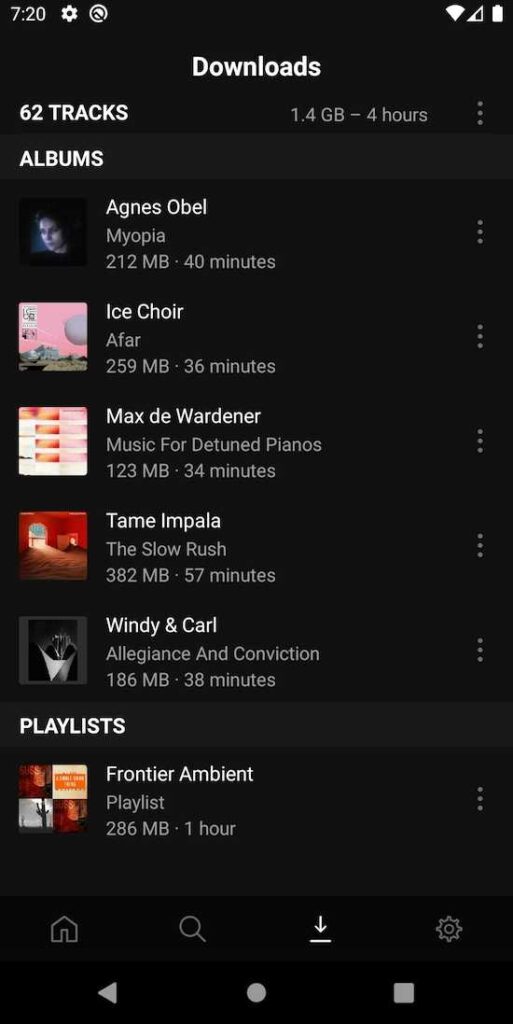

This metadata tells Plex which artist and album a song came from, plus its placement on an album. Add metadata to every song in your library.Name each track of an album, placing the track's number ahead of its name.But don't jumble the files together separate each album into its own folder. Each artist's folder should contain their music.Your "Music" folder should contain a unique folder for every artist.Create a folder titled "Music." This is the directory that Plex will use for music.That said, Plex offers detailed instructions on this subject, and I'm going to summarize those instructions here for your convenience: Organizing your music is very easy, and if you already maintain a music collection for iTunes or another music player, then your work is done. Otherwise, the service will just show you a mess of random tracks. Once you have a digital music collection, you need to organize it for Plex. That means ripping your CDs, buying DRM-free music through platforms like Amazon or Bandcamp, and removing the DRM from music you purchased on iTunes. As for a NAS device-well, they're literally made to be servers and are often the best option for hardcore Plex builds.īecause you're building a streaming service, you need to hunt down some MP3s, WAVs, FLACs, and other music files.
#Plexamp playlists Pc
If you go down the PC route, I suggest using something small and efficient like an Intel NUC, though you can also just pull an old Acer or Dell out of your closet. If you want something with a bit more flexibility or power, you should use a computer or NAS device for your Plex server. (Note that both of these solutions require external storage.) And while these products aren't super powerful, they're good enough for streaming 4K video, so they won't have any problem streaming audio.
#Plexamp playlists tv
The NVIDIA Shield TV and Raspberry Pi 4 are much more power-efficient than full-sized computers, so they should have a minimal impact on your electric bill. But as always, I suggest using an NVIDIA Shield TV stick or a Raspberry Pi 4 microcomputer. It just needs a reasonable amount of storage space and a stable internet connection, preferably over an Ethernet cable. Plexamp now works across iOS, Android, Mac, Windows, Linux and Headless, the company notes.You can turn any old computer into a Plex media server. In addition to the new AI offering, the app has several other music discovery options, including the ability to use a variety of DJ modes, go on machine-learning “sonic adventures,” use “mood radios,” travel back in time to rediscover oldies and more. The company notes you can limit its results only to music in your own library via a setting next to the API key. They’ll then need to create an OpenAI account in order to enter an OpenAI API key in Plexamp settings to enable Sonic Sage. To use the option, users must be a Plex Pass subscriber and they must also subscribe to TIDAL’s streaming music service, which is Plex’s music partner. For example, the company suggests users could ask for things like “mellow ballads by heavy metal bands,” “upbeat electronics tracks from The Chainsmokers and other DJ duos,” “psychedelic indie rock like Pink Floyd,” “70s grooves by powerhouse women,” and more. The new feature, dubbed Sonic Sage, lets users create their own playlists by using natural language to describe what they want to hear. It later expanded from the desktop to iOS and Android, and got an overhaul, becoming a subscriber-only service. In Plex’s case, it’s using the feature for its music player side project for the time being, not its main media player app.įirst launched in 2017 as the debut project from Plex Labs, Plexamp was introduced as Plex’s spin on the classic Winamp media player app, even offering visualizations to accompany your tunes. Spotify, notably, launched an AI DJ to both introduce and select music for its streaming app users, while other third-party apps like Petey are now using ChatGPT to make Apple Music playlists.
#Plexamp playlists update
The update follows other efforts around using AI interfaces to program users’ music selections. The company announced today a new feature called “Sonic Sage,” powered by OpenAI’s ChatGPT, that will build unique music playlists by scanning users’ libraries and leveraging their TIDAL subscription. Plexamp, the music player originally incubated by the Labs division of media company Plex, is tapping into ChatGPT with its latest update.


 0 kommentar(er)
0 kommentar(er)
